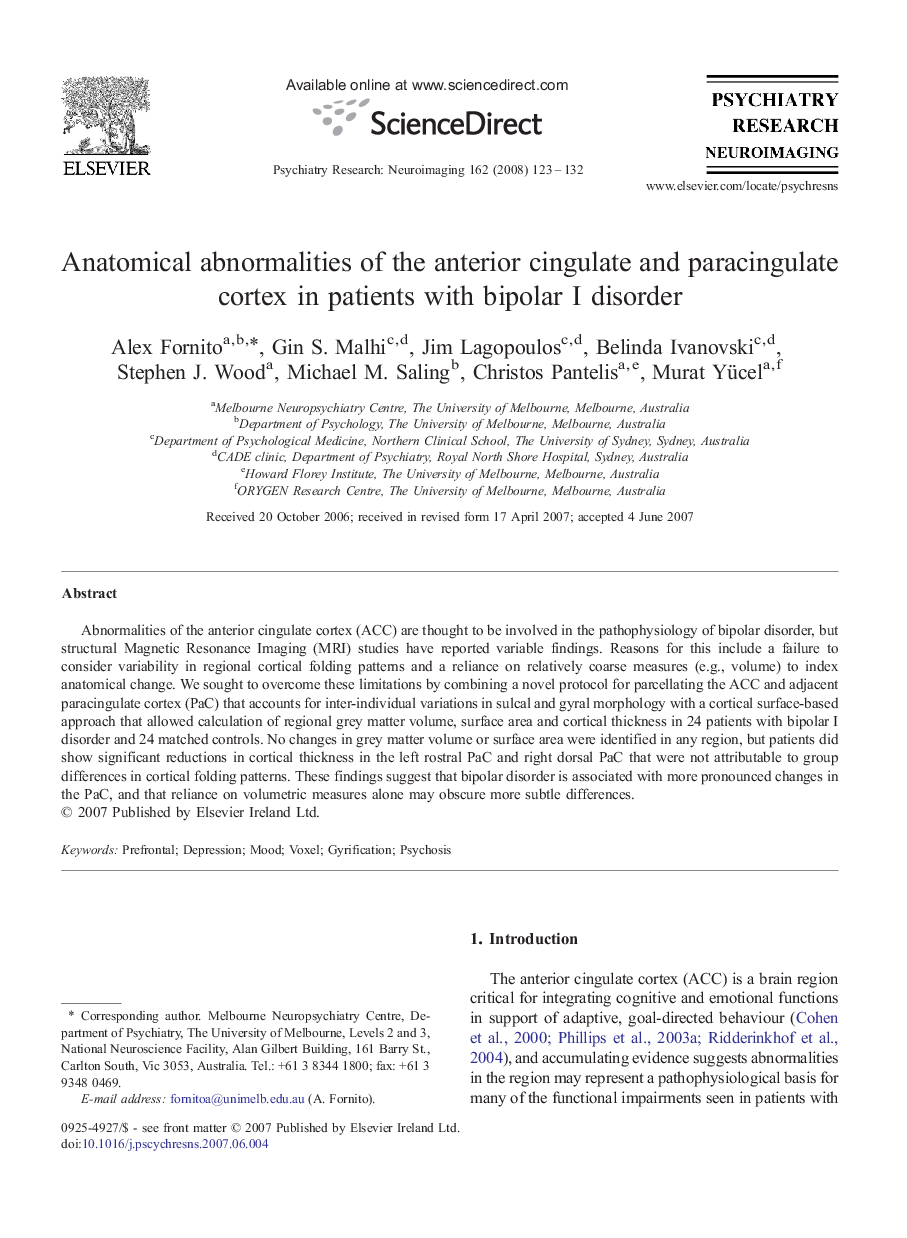| Article ID | Journal | Published Year | Pages | File Type |
|---|---|---|---|---|
| 335838 | Psychiatry Research: Neuroimaging | 2008 | 10 Pages |
Abnormalities of the anterior cingulate cortex (ACC) are thought to be involved in the pathophysiology of bipolar disorder, but structural Magnetic Resonance Imaging (MRI) studies have reported variable findings. Reasons for this include a failure to consider variability in regional cortical folding patterns and a reliance on relatively coarse measures (e.g., volume) to index anatomical change. We sought to overcome these limitations by combining a novel protocol for parcellating the ACC and adjacent paracingulate cortex (PaC) that accounts for inter-individual variations in sulcal and gyral morphology with a cortical surface-based approach that allowed calculation of regional grey matter volume, surface area and cortical thickness in 24 patients with bipolar I disorder and 24 matched controls. No changes in grey matter volume or surface area were identified in any region, but patients did show significant reductions in cortical thickness in the left rostral PaC and right dorsal PaC that were not attributable to group differences in cortical folding patterns. These findings suggest that bipolar disorder is associated with more pronounced changes in the PaC, and that reliance on volumetric measures alone may obscure more subtle differences.
